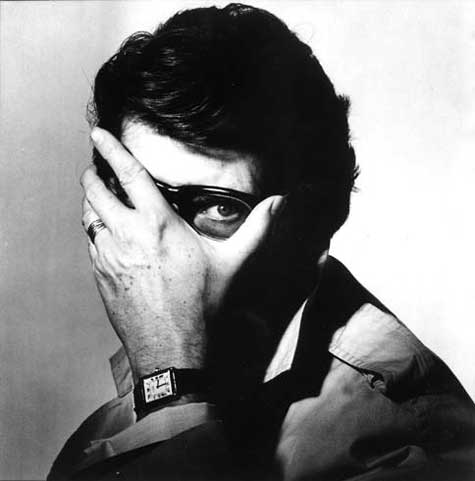-
"No longer does the virtual simply enslave and deceive. Instead, it filters into the real—blurring any obvious, hierarchal distinction between the two worlds. The virtual in these films resembles more so the surreal life of our subconscious drives and desires, a mysterious source of power and revelation, than the programmed realm of illusion concocted by The Matrix. Perhaps we have come to spend more time on the computer than communicating face-to-face with other flesh-and-bone creatures, or smartphones have practically bent our bodies into question marks. But what I would argue has really shaped the virtual dimension in these films is the videogame, which has now come to nearly permeate our everyday imagination."
Media from 2010
03 January 2011
In 2009, I kept a textfile in ~/Documents to track all the books I read. In previous years, I’d forgotten what I’d read, and didn’t want to lose track.
At the end of the year, I was disappointed in how tiny the list was. This was mainly in down to 2009 being a rubbish year (as years go). But still: for someone who loves books, it wasn’t enough.
This year, I repeated the exercise, but with a file called media-2010.txt. The goal was to track everything I consumed, whether or not I liked it or not. My thinking was simple: I wanted to read more, but by tracking movies, TV shows, exhibitions, and games, I hoped that I could at least see what I was doing when I wasn’t reading.
This isn’t the full list, but it’s the picks of it for this year.
Films

The best film I saw in 2010 was Jacques Audiard’s A Prophet. His The Beat That My Heart Skipped was already a firm favourite, so I was hugely enthusiastic for this, and really wasn’t disappointed. Superficially, it’s a prison drama, but there’s so much more going onto it than that, and it segues between life inside the prison, trips outside, and fantasy sequences with little fanfare. An early, pivotal scene of violence is brutal and truly unpleasant; it’s intended to stick with you throughout the movie, as it’s a hinge the plot sits upon. But outside that, violence is more a threat than a depiction, perhaps making the memory of that horrendous scene more notable.
It’s intense, nerve-wracking, and the promise of redemption dangled like a carrot in front of characters with many good reasons not to take it. Marvellous performances, wonderful moviemaking.
But: it really came out in 2009.
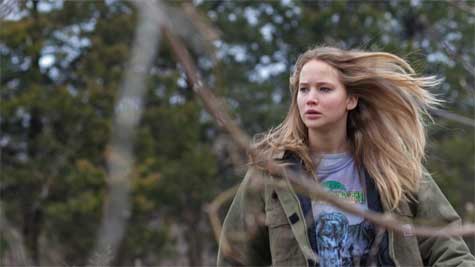
The best film I saw that was released in 2010 was Winter’s Bone; a cold slice of Ozarks-Noir. Which, of course, isn’t a genre, but the easiest way to describe this quest for a missing patriarch. Jennifer Lawrence’s performance is incredible, and I hope she’s rewarded. It’s not an easy movie by any means – the mountains are as much part of the scenery as they are written into the faces of much of the supporting cast – and you’ll never feel warm whilst watching it. It’s not a quest for redemption; just for survival. By the end of the film, it’s clear that all the characters are fighting to survive in their own ways. Great. (And: whilst Lawrence is the obvious stand-out, I loved John Hawkes’ nuanced performance as Teardrop).
I saw a lot, though, and enjoyed most things. I had a great time with Inception, primarily because I really like heist movies – put the team together, execute the job – and Nolan’s imaginative, clockwork plot played out as an excellent genre movie. It’s not necessarily clever, but it is intricate, and its execution is marvellous. Also, the suits are really good.
On the TV, I mainly enjoyed shows from America. The big discovery for me was Community, which is more inventive than many sitcoms I’ve seen a while. And I loved Rubicon for its intelligent take on intelligence work, even if it had a few too many plots for its own good, making its cancellation even more frustrating for fans. But what an actor’s show: Michael Cristofer’s Spangler is as devious as he is distracted, and Arliss Howard’s Ingram turned out to be exactly the sociopath you suspected he might be – an inventive sociopath, nontheless.
Books
Lots of alternate history this year.
Christopher Priest’s The Separation was a real stand-out – a tangly, bifurcated take on WWII, with two narratives of which only one can be true – though he refuses to commit to which. Twins, acting, impersonation, the negotiations of international politics; it’s a cracking read, and really shouldn’t have been buried on the SF shelf.
Similarly, Keith Roberts’ Pavane, a short-story sequence imagining England in the late 20th Century when ruled by a Holy Roman Empire was a real find. It’s a book heavily rooted in place: primarily around Dorset, Bournemouth, Dartmoor, that neck of the woods. In it, his characters enact a dance over fifty years – one that, initially, seems random, but structure eventually emerges. I also really liked the stuff about semaphore.
The biggest thing I read – spread throughout the year – was James Ellroy’s Underworld USA trilogy. The books stand alone well, if you don’t want to read the lot, and by the end, I think I can comfortably say that the very first (American Tabloid) is the best. They’re dense, knotted, slang-laden tales of politics and corruption, bad cops and good bagmen, surveillance and assassination, race and communism; the dark side of the sixties (and thus, the late fifties and early seventies – the lead-in and the results) explored through what might be true, might be history, might be a kind of alternate history. I was entranced, even when I squirmed through his machine-gun prose, the character’s casual racism (LA in the sixties as the black militant groups start to exert influence is not the most… sensitive setting), and the squicky violence. Though I like American Tabloid the first, Blood’s A Rover – 2009’s final installment – contains the clearest signs of redemption for many of the characters, and, in Don Crutchfield, one of Ellroy’s quietest protagonists.
Art
I think my favourite exhibitions of the year were the Irving Penn portraits at the NPG, and the Eadward Muybridge at Tate Britain.
The Penn was a lovely retrospective, showing an artist exploring portraiture and challenging its constraints. So much consistently inventive work throughout his career; so many brilliant portraits.
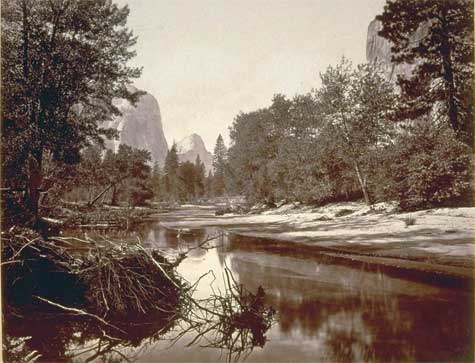
The Muybridge was a fascinating portrait of a man exploring photography itself. His time-and-motion images are rightly seminal, but what I wasn’t aware of was his landscape work – lugging huge photographic plates up the Californian hills, as an early landscape photographer. My favourite work in the exhibition were the gigantic, 360º panoramas of a pre-Earthquake San Francisco. An eccentric, then, but what an intrepid explorer of a nascent medium.
Oh, and special note to River Sounding at Somerset House; on a beautiful summer day, the thrumming, shaking bass of the Thames in its damp cellars was sensational.
Theatre
More trips to the theatre than in a long while, albeit still not many by the standard of the other sections of the list. One obvious stand out: The Old Vic’s revival of Tom Stoppard’s The Real Thing. Great to see this revived: in many ways, it’s one of his “straightest” plays, and manages to shift from a brilliant – if somehwat obvious opening – into a more thoughtful, considerate piece. It helped that Toby Stephens was utterly brilliant.
Music
One gig really stood out. Rival Schools at Hoxton Bar And Grill was a highlight. The post-hardcore group, almost on hiatus, return nine years after their first record with a second. And, with a falling star, comes a smaller venue: it sold out in an hour, was packed, and everybody knew the words to everything. And yet: so exciting to see such a polished, experience group of musicians still on top of the game, still playful – noodling around Beatles songs and metal covers between tracks – and playing to the audience perfectly.
And, of course, The Hold Steady in the summer played another of their great live sets: they’re fine enough on record, but are easily one of my favourite live acts: so much enthusiasm and energy, and, as ever, a ninety minute set with no duff moments.
Last.fm isn’t a representative example of what I enjoyed this year, strangely. Highlights from the CD stack: The Roots’ How I Got Over, the incredible My Beautiful Dark Twisted Fantasy, the Glasser and Warpaint albums, Scuba’s Triangulation, and many more besides.
My favourite moment in pop, though, was Nicki Minaj’s verse on Kanye’s Monster. For me, it’s one of the weaker tracks on MBDTF – until those ninety seconds, which are just something else. Seriously: best moment of the year.
Games

It’s hard to get away from Mass Effect 2, for me. My head tells me it’s exactly what I shouldn’t like – big, overarching, technical, lots of Up Front Story-Telling. It’s a bit too genre-heavy. And yet: my heart swelled as I played it. The gamer in me didn’t like the episodic structure, but the adult in me did: it played out like a series of Battlestar Galactica, broken near-perfectly into about 20-odd 45 minute chunks, advancing side-stories and main plot in turns. The shooting is now competent enough to not be hateful; the writing is great (when it’s not being a bit crap), and oh, the characters. Garrus, Thane, Legion, and especially Mordin; very strong. I know many people who didn’t get on with it, and I respect that: their problems were rarely mechanical, and usually about the universe, the characters, it not clicking. I think that’s OK – much better to dislike something because it’s not to your taste than because it’s entirely unlovable. Well done, Bioware.
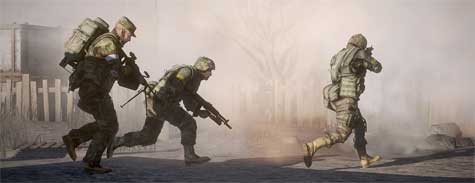
Battlefield: Bad Company 2, as well as being a total mouthful to say, was a surprise hit for me, and featured my favourite piece of gaming interface design last year: the way it utilises the back/select button. Public servers feature teamwork, almost no abuse, and very little voice chat, simply because of that button. It marks targets you’ve seen, and the little icon above them becomes visible for your whole team. As a result: everyone marks targets for everyone else. They get points for the mark, you get points for the kill, and so you mark targets for them. We don’t need to talk, or try to get people to play the team game, or argue with idiots, because we’ve got the back button. Couple that with the ability to respawn on squadmates, rather than way back at base, and BFBC2 works teamplay into its very mechanics without being complex or nerdy. The Vietnam expansion has brought people back, but the main game is still played to a high, social standard. The only team-game with public serves this good is TF2, in my tiny, humble opinion. And: the sound-design is phenomenal.
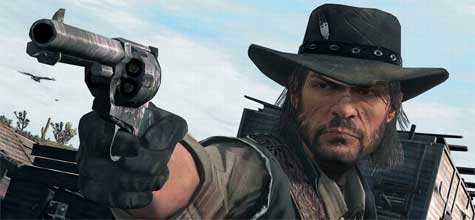
Red Dead Redemption was totally captivating for the twenty-or-so hours I explored its landscape, sidequests, and primary plot. It was lovely to see a genre so rarely explored in games done pretty well, although I do hope that some of the topics it explored – journey-as-narrative, most notably – can be explored without the brute force of a Rockstar budget and (alleged) Rockstar San Diego working practices.
Super Meat Boy is brilliant. Totally the sort of game my head likes. If you’ve not played it, you should. It’s got the tightest controls I’ve ever seen on a 360, brilliant level design, hilarious replays, and it manages to be the best kind of “old-school” fun. It’s nearly caused me to break a few controllers, but that’s part of the charm.
What else? Halo Reach, for starters. Halo is such an acquired taste, in my opinion; a real gamer’s game. After not caring much for 3, I ended up adoring Reach; a fine single-player campaign, tight, subtle multiplayer, and the rush that is Firefight. So much Firefight; so many grunts exploding in confetti. In some ways, it’s the top of the list – the most gamey-game I played this year. But it’s polish on something that was great to begin with, and not for everyone. If you’ve played it and liked it, you already know.
I didn’t play enough Super Street Fighter IV after giving so much time to the original, non-super variant last year. No matter; it’s not going away any time soon. And my unfinished pile is still high – right now, I’m enjoying Castlevania: Lords of Shadow and the majestic Need For Speed: Hot Pursuit, and they’re going to see me well into 2011.
That was a few things I liked in 2010; by no means all. Next year: more.
-
"This is the part that interests me: What happens to a person's experience of prettymaps when the echoes of their own life start to make up the map itself? What happens when the only streets on a map are those you and your friends have traveled?"
-
"It's the new urban Baroque! Install greenscreens everywhere in an optical infrastructure for the 21st century—a DIY industry of everyday special effects, little greenscreens popping up beside trees, in alleyways, behind buildings, atop roofs, the entire urban environment camera-ready and pierced like St. Sebastian by the arrows of parallel worlds, our cities become effects labs and every sidewalk a set." Chromakey Planet.
-
"I’m basically the James Cameron of PowerPoint 97." Making short films in Powerpoint because it's the only tool you've got. Brilliant.
-
Mark Romanek's film of the Ishiguro. I am hoping this might be good and, syrupy (perhaps temporary) soundtrack aside, it's looking that way.
-
"But I think to succeed eReaders need to meet the needs, not just of the direct user, but of those around them, the friends and family who may not welcome their loved one’s absorption in this exciting new media. They are the “next largest context” within which the new device must win acceptance… The first question [with a digital device] is no longer “what are you reading?” It’s “what are you doing?” – a question that somehow already carries a hint of reproach."
-
Beautiful: capturing graffiti with an ultra-basic setup (torch sellotaped to pen and webcam), and then translating that into vector geometry that can be stored as an XML dialect. I like how simple and open it is, and the fact that Graffiti Markup Language is designed to be used in the field (even if it can't be yet).
-
"In one sense, Up Against the Wall, Motherfucker! is a truly exotic bit of esoterica — a game on the Columbia riots, printed back in 1969 in the pages of the Columbia Daily Spectator, and designed by James F. Dunnigan, one of the finest and most prolific designers of board wargames… In Up Against the Wall, Motherfucker! you play either as Columbia University's administration, or as the radicals who have seized control of Fayerweather Hall. You are attempting to influence the opinions of various stakeholders in the university — students of different sorts, the alumni, and so on. Random event cards influence play. Ultimately, the side that gains the greatest sympathy on the part of university stakeholders wins."
-
"Zoom in on that spot there." Blade Runner has a lot to answer for; notably, this.
-
"Use and create Delicious bookmarks from the Safari web browser" – with a single keyboard shortcut. My main reason for sticking with Firefox was its Delicious integration, but if this is any cop, I think I'm save from terrible memory leaks for the future.
-
"I tend to see them as having much more in common with the approach of an architect or landscape designer in terms of shaping and creating flows, confluences and possibilities for enjoyment… As a result I really do think that critical appreciation and commentary from the world of architecture and design could be illuminating and progressive." Jones on the lack of perception – outside games criticism – of games as design objects (rather than media objects). It is excellent; I agree with it all.
-
Card-based dungeon-crawling game. Basically: card-driven roguelike. Should print it out and take a squint sometime.
-
"Taps is a temporary web service you run on a server that has access to the database you want to export. You can then run the client to connect to that service and pull data out of it in chunks. It works through firewalls, doesn’t require a direct ssh connection, and – best of all – it’s database independent. So you can export from a MySQL database and import to PostgreSQL, or vice versa."
-
Vast, detailed CHUD article on an older treatment Cameron wrote for Avatar, which does sound more interesting than the version we got; sadly, it also sounds very sprawling – there's even more world-building going on. Still, some elements cut from it – notably, Hegner – seem like a real shame to have lost.
-
"I did a set of four walks in Austria; two long ones, two short ones. I did some "daystreaming" where using bits of technology I was updating my location, status and pictures as I walked." Ambient information gathering, whilst taking in the outdoors, and all for charity. Lovely.
-
And it just worked first time. Awesome!
-
"The list is the origin of culture. It's part of the history of art and literature. What does culture want? To make infinity comprehensible. It also wants to create order — not always, but often. And how, as a human being, does one face infinity? How does one attempt to grasp the incomprehensible? Through lists, through catalogs, through collections in museums and through encyclopedias and dictionaries." Eco on lists.
-
"Today, the UK government's Department For Transport unveils a new browser-based MMOG, created by New York-based developer Area/Code. Designed for early teenagers to learn principles of traffic safety, it's probably the largest 'serious games' project ever to be created for the UK. Code Of Everand is the result of over two years of work with the Department For Transport by Area/Code principals and designers Frank Lantz and Kevin Slavin, not only because of its size and ambition, but also because of the complexities of developing it for a government body… We spoke to Lantz, Slavin and Simon Williams, who led the project at Carat, the Department For Transport's media agency, about what Code Of Everand is, how they pulled it off, and why they think it could prove that games can be a powerful platform for learning." Edge interview.
-
Wonderful, wonderful interview with Eggleston. So much care and attention in the work and the way he describes it; so many lovely illustrations. The "color scripts" alone are great, but really, it's all worth your time.
-
"Take a break from your computer! Download, print and build your own pinhole camera. Follow the instructions and enjoy!" Beautiful.
-
I love Jeff Bridges as a photographer, and his pictures from the Iron Man set are no exception.
-
"Mathematically speaking, “Napoleon Dynamite” is a very significant problem for the Netflix Prize. Amazingly, Bertoni has deduced that this single movie is causing 15 percent of his remaining error rate; or to put it another way, if Bertoni could anticipate whether you’d like “Napoleon Dynamite” as accurately as he can for other movies, this feat alone would bring him 15 percent of the way to winning the $1 million prize."
-
"In a detailed technical feature with sample code, Team Bondi programmer Claus Höfele delves into the practical steps for your users to get gameplay footage automagically uploaded online." Good that this stuff is being published. This kind of stuff really isn't that difficult; the hard bit is recording footage from your game or framebuffer; the rest of the process is trivial, and hopefully coverage on sites like Gamasutra will help publicise this kind of interaction.
-
"The point in pointing out these numbers, since we’re throwing out analogies to films and videogame innovation, is that it seems that no matter how well a movie is interpreted as “innovative” by a reviewer, the truest mark of success lies in its ability to inure itself with the consumer." No. Commercial success is just one kind of success, and films like Eraserhead have had a far greater impact on young filmmakers than any amount of box-office smashes. The real rarities are films such as the Godfather or Citizen Kane, which manage to be box-office smashes and innovative masterpiece.
-
"Anytime I hear the alpha futurist-y featurists get all excited about some kind of idea for how the new ubicomp networked world will be so much more simpler and seamless and bug-free, I want to punch someone in the eye. They sound like a 5 year old who whines that they want a pink pony for their birthday." Julian has ubicomp fail.
-
Satoru Iwata interviews the product designer and producer behind the Wii Fit balance board. There's some interesting stuff on the prototyping process on the second and third page of the interview.
-
"IE 6 is a riskier proposition, but can show improved image resizing when the AlphaImageLoader CSS filter is applied, the same filter commonly used for properly displaying PNGs with alpha transparency." Oh, that's interesting.
-
Mirror's Edge 2D flash game – which look, by all accounts, to be an official spin-off. Can't wait to see the full version; it's a very impressive little game.
-
"You want to know what I think? I'll tell you what I think. Here's what I think: Java Java Java is is is too too too damn damn damn verbose verbose verbose. That's what I think. And I'm sticking to it. So there."
-
"The Nietzsche Family Circus pairs a randomized Family Circus cartoon with a randomized Friedrich Nietzsche quote." This one is particularly good.
-
Wonderful, wonderful, stop-motion trailer for a Megaman 9 built out of the real world. Hypnotic, and lovely.
-
"Director Ridley Scott will helm the bizarre big screen adaptation of popular boardgame Monopoly… According to the Hollywood Reporter, Ridley will give the Monopoly movie a futuristic edge akin to his 1982 epic Blade Runner… The unlikely subject matter is just one in a line of Hasbro games to get big screen makeovers as part of an exclusive pairing with Universal Studios… Transformers filmmaker Michael Bay is producing a Ouija Board feature, while a film version of beloved classic Battleship is also in development." I know what "development" means, but still, this is the craziest games-to-film news I've seen for quite some time. Hollywood is strange.
